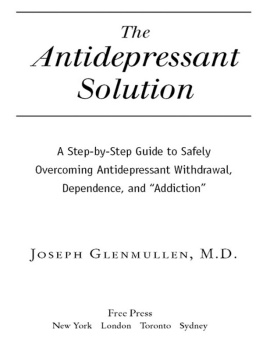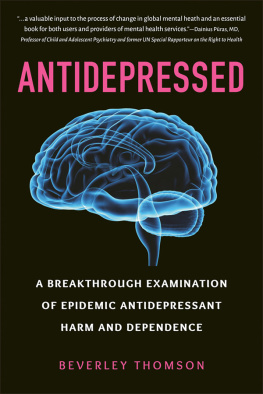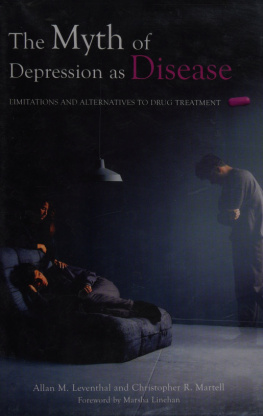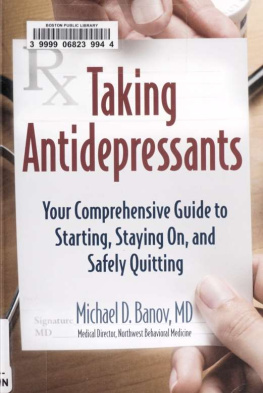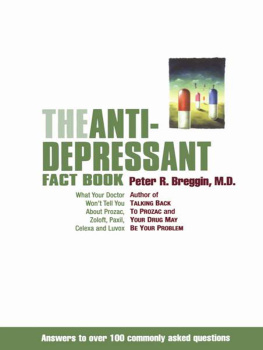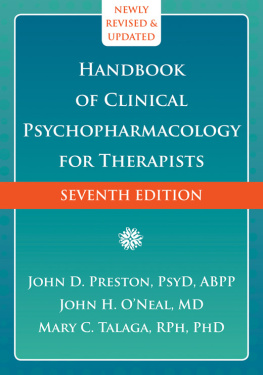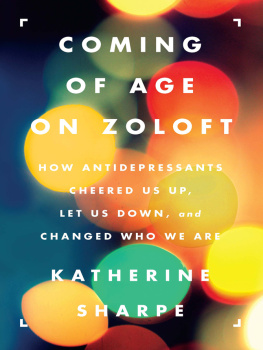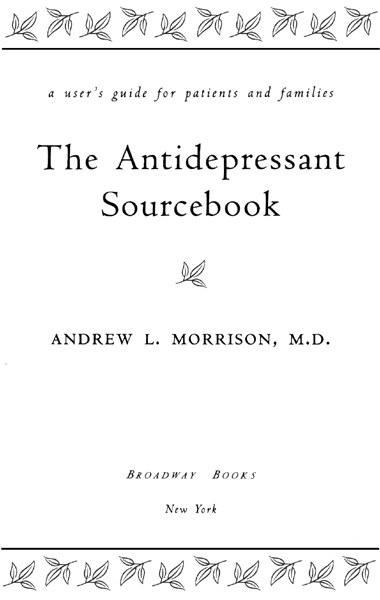In memory of M.
This book is dedicated to those about to lose hope.
May it inspire them not to give up.

Portions of the proceeds of this book will be donated to NARSAD (the National Alliance for Research on Schizophrenia and Depression). NARSAD is a national, not-for-profit organization whose primary objective is to raise funds to find the causes, cures, better treatments, and prevention of the severe mental illnesses. It was founded more than ten years ago by family members and professionals who are convinced that a better future can be found through expanded brain research.
This book is no substitute for medical treatment. Treatment for the disorders described in this book should be undertaken only under the supervision of a physician.
Acknowledgments

To my wife, Candy, I give most of my gratitude. Without her creativity, encouragement, editing skills, and tolerance of my peccadilloes, this book would never have become a reality.
Similarly, had I not had the support of Jonathan Cole, M.D., and John Greist, M.D., I doubt that this book would have happened. Dr. Greists painstaking review of every page is immeasurably appreciated.
Several very good friends also helped with the manuscript, and I remain indebted to them for their helpful comments: Jack Adair, M.D., David Giles, M.D., Sarah Hofheinz, and Penny Stone. A specific thank-you must go to my close friend Jim Hunt, M.D. (the Master), who first taught me the fundamentals and art of prescribing psychiatric medicine. Thanks also to Mom and Dad for their unceasing encouragement, and to Toad Atwill, Lisa Havens, and Linda Hegeman for their assistance.
Laurie Casey, and especially Pam Barker, performed typing duties with nary an error, and in such a timely fashion that I simply couldnt have asked for more. Thanks particularly to wordsmith Rianne Keedy for the finishing touches.
I will be forever grateful to two special mentors, the late Drs. Clare Assue and Bill Fisher, who both embodied and taught what it takes to be a responsible psychiatrist. Thanks also to Jim Coles, Dick Darko, and Craig Pinkus for their advice, both legal and otherwise.
I am also quite grateful to Carol Ascherman, Ron Diersing, Susan Kanipe, Laura Klinestiver, and Scott Clark for their assistance, and for the cooperation of the following pharmaceutical companies (in alphabetical order): Bristol-Myers Squibb, Eli Lilly and Company, Forest, Glaxo Wellcome, Hoechst Marion Roussel, Merck, Novartis, Organon, Oxford, Parke-Davis, Pfizer, Sandoz, SmithKline Beecham, Solvay, and Wyeth-Ayerst. Finally Id like to especially thank Jennifer Griffin, my editor, her talented assistants, Katy Burns-Howard and Jay Crosby, and Main Street Books/Doubleday for being so easy to work with. I am extremely appreciative of their help in spreading the word about these wondrous antidepressant medications and for taking part in the battle against depression.
Contents





38.
Preface

I T WAS THE KIND OF day that people say depresses them. It was February 1972, and things outside looked stark and colorless. The monotonous gray shade of the sky seemed to pervade everything, and it did not change as the hours dragged on. How ironic, I thought, as I stared at the barren tree I could see through the hospital window. It looked so depressing outside, yet inside I was jubilant, brimming with excitement about the future.
Just two years out of medical school, I was working in the psychiatry residency program that had been my first choice. I was learning more and more every day, and I loved it. Furthermore, I had a wife and a two-year-old son who seemed perfect. I had doubted if life could get any better, but my wife became pregnant again, and I was with her as she lay in labor. Maybe it could get better!
And it did. Her labor was long and hard, but the delivery went well and my wife and new baby were both healthy. I had a wonderful nights sleep and my joyous mood continued into the next morning. I laughed out loud at the on-air antics of a disc jockey while driving to work. Outside the car, it was still overcast and gray, like a Russian winter day, but inside I felt buoyant.
After arriving at the psychiatric hospital, I began turning my attention to my patients, one of whom had depression. I had been learning about depression for several years. I had read articles and books and had attended lectures, so I was pretty book smart about it. But early this morning, still effervescent inside, it was especially hard for me to fathom what depression must really feel like.
The patient with depression was named Mark. Mark was nineteen when his parents took him to their family physician because of their concern about his personality change. He just didnt seem to care about anything anymore. Previously sociable and a decent student, he had become quiet and withdrawn and had lost his work ethic. He slept a lot and never laughed like he used to. Mark admitted to his family physician that he seemed to have lost his interest in doing the things that he previously enjoyed, and, among other things, he wondered if everybody, including himself, would be better off if he were dead.
The family physician had examined Mark and performed the appropriate laboratory tests to rule out other illnesses, like hypothyroidism, that sometimes mimic depression. Marks depression was diagnosed and treated appropriately for about a month but had not responded well to outpatient treatment. This continued depression and lack of response to treatment is what led to Marks admission to the psychiatric hospital and is how Mark came to be under my care.
Mark and I had hit it off. We both enjoyed playing and watching basketball, and what was left of Marks sense of humor was still engaging. We liked each other and had worked well together for over two months. Mark worked hard in psychotherapy and took his medicine as prescribed. As expected, there was definite improvement. So much so, in fact, that I had recommended a weekend furlough out of the hospital (a common practice back in 1972) in order to see how prepared Mark was for final discharge. He was due back that morning at eight oclock.
By nine, Mark had not returned. A few hours later his family called to say they had found Marks body in the garage. He had shot himself through the head. Adrenaline pumping and heart pounding, I made a beeline to the office of the professor who was supervising the case. I had had patients die before: of cancer, of heart disease, and of other things. But there was something different about this. It should not have happened, and I found myself sobbing. Mark was better; I know he was better! God, how I hurt inside.


